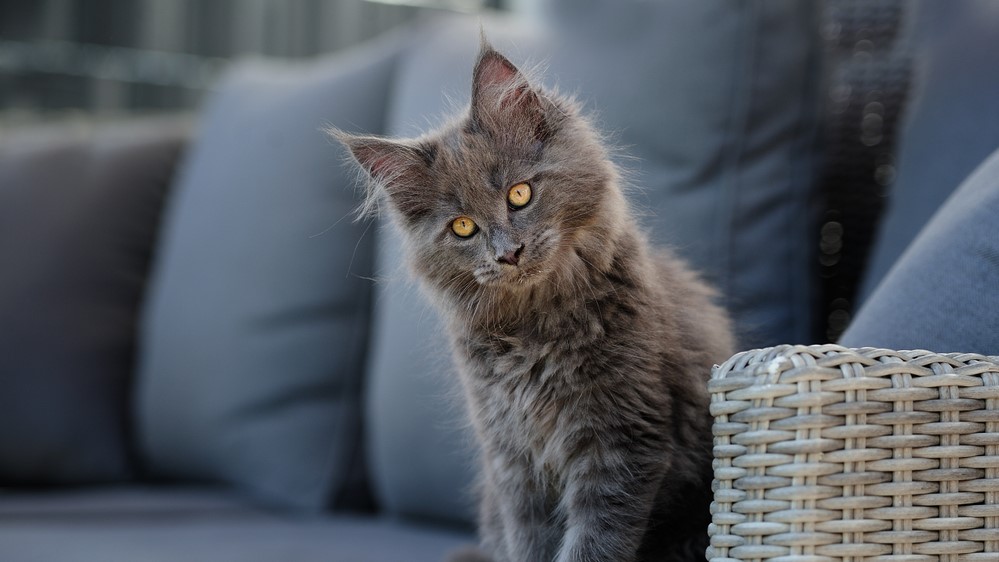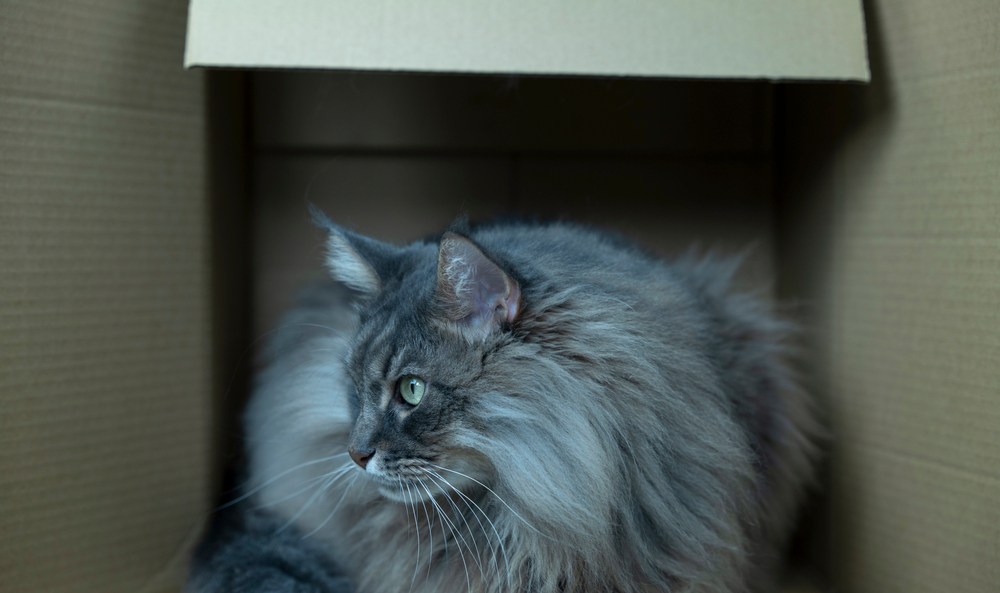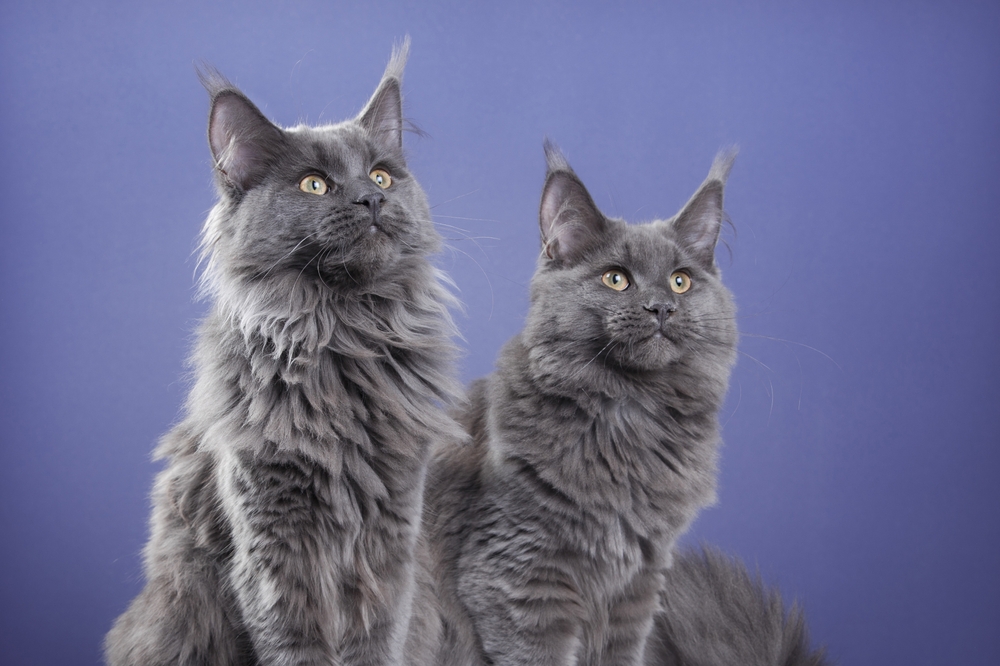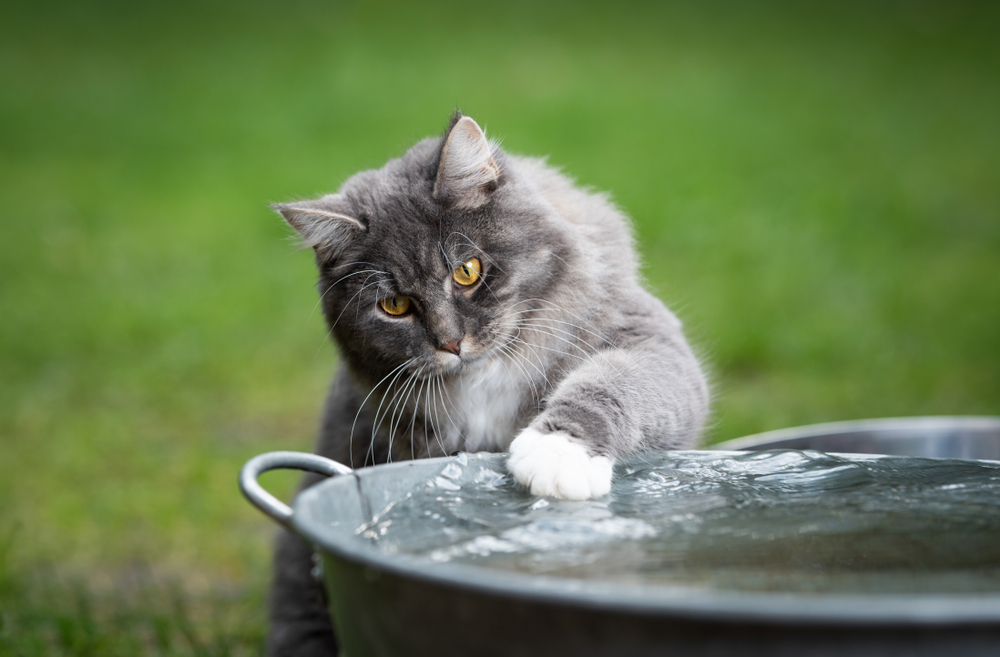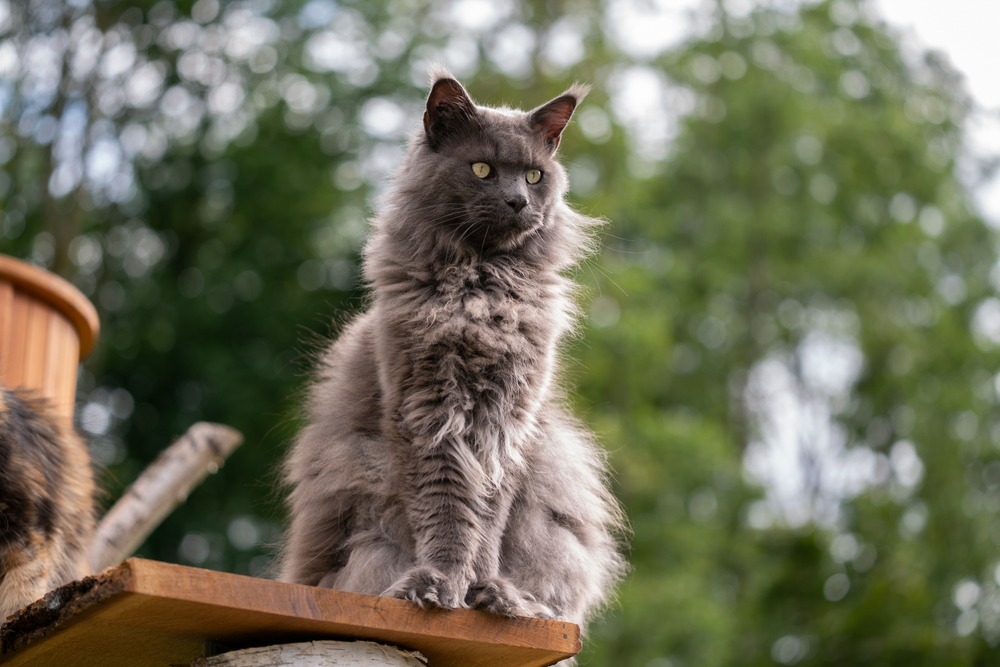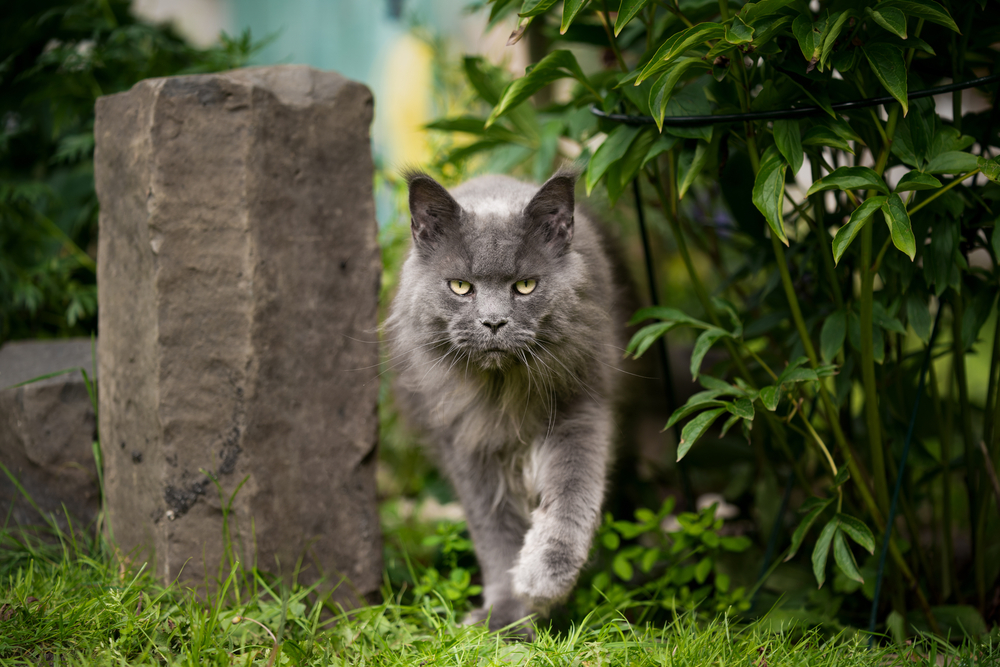📖 Table of Content:
I think we can all agree that Maine Coon fluffs are the most magnificent felines to ever walk this Earth. It’s undoubtedly hard to pick your favorite one, that’s for sure! But I have to admit, Blue Maine Coon might just be the one for me.
The first time I saw this majestic-looking feline, I fell head over heels for her. Literally! I started researching the nearest Maine Coon breeders because I was determined to have one for myself.
Ever since I started looking into the feline world, I have been very fond of this breed. I loved how enormous they looked, but behaved like gentle babies. I loved their sweet demeanor, loving nature, and playful character.
I thought, “One day, a very special Maine Coon feline will be part of my crazy world, too!”
That has not happened yet, but I feel it coming. So, if you are anything like me, and you want to bless yourself with a fluffy gentle giant of your own, especially with a Blue Maine Coon fluff, then this article is perfect for you!
Let’s cut through the fluff and see what this special breed is all about!
Blue Maine Coon: Everything you need to know
1. The origin of the breed
Main Coon cats, including the striking blue fluff that’s our today’s concern, were supposedly first brought to Maine back in the 1880s.
These mesmerizing felines are said to be related to the Norwegian Forest cat or Siberian cat, which European settlers brought with them to the American ground on one of their quests. Here, they were crossed with local feral cats, whose union bred the Maine Coon cats we know today.
There is also a theory that Maine Coon cats came as a result of an accidental crossing of the cats the settlers brought with local raccoons, but of course that’s hardly true.
Maine Coon kitties bear a great resemblance to their Norwegian Forest feline relatives. They inherited their large size and long fluffy fur which is, however, a bit shorter than theirs.
In the beginning, Maine Coons were celebrated and respected by the local Maine farmer’s community because of their persistent and successful ability to control the rodent population.
Today, these felines are equally respected and loved, and they are recognized as the State Cat of Maine, which is a very honorable title to bear.
2. How rare is the color blue?
Contrary to what you might believe, Blue Maine Coon cats are not that rare at all. In fact, this is a rather popular and frequent Maine Coon color. So don’t worry, it’s fairly easy to get this color from breeders.
But, where does the blue come from?
Well, blue is actually one of five solid Maine Coon colors recognized by the Cat Fanciers’ Association (CFA). The other four include black, white, red, and cream.
The “blueness” in these felines comes as a result of the recessive dilution gene which causes the color black of the fur to be muted. This same gene diluted the redness of Maine Coon’s fur and turns it into cream.
In order to have the feature expressed by the recessive gene, such as blue coat in this case, both parents have to be carriers of the same gene. This means that if you have two Blue Maine Coon parents, you have a 100% chance of having an entire litter of Blue Maine Coon kittens.
3. How big can Blue Maine Coon cats actually get?
Generally speaking, Maine Coon cats are one of the largest domestic feline breeds in the world today. So, the Blue variation is no exception!
Female Maine Coons can grow up to 14 inches tall, and males up to 16. These gentle giants can weigh anywhere between 15 and 25 pounds, which when you think about it almost double the weight of an average domestic cat.
Despite their large size, their body is well proportioned. Maine Coon felines have long and muscular bodies and long and fluffy tails. They have medium-sized heads, muzzles in the shape of a square, and big ears with tufts.
Some Blue Maine Coon cats can be polydactyly (have an extra toe on their paws) and that condition is relatively common in this breed.
4. Do they make good pets and family members?
Maine Coon felines make excellent pets and family members! They are indeed a very interesting breed, with a sweet personality, graceful demeanor, and very affectionate nature. They are very patient and gentle with children which makes them a perfect feline companion for bigger families.
Maine Coons are also extremely vocal. However, they are not your typical meowing felines, but rather those who love to chirp and thrill around their home. They usually do it when they’re hungry and want some food ASAP, or when they crave their owner’s attention.
The only time when this breed meows, is when they’re feeling lonely or are in some type of pain.
5. How to take care of a Blue Maine Coon kitty?
Taking care of a Blue Maine Coon cat will more or less be identical to taking care of any other domestic feline.
As her owner, you’ll need to get her yummy cat food, food and water bowls, a litter box, several toys to keep her active and occupied, and a couple of other cat accessories, like cat trees, scratching posts, and so on.
Their activity level doesn’t exceed the normal amount, so there won’t be a need for any kind of special exercise. As long as you make sure you find some time during the day to play with her and teach her a couple of tricks, you’ll be good to go.
Maine Coons are known for their long and luscious furs, which means they shed a lot. This means that you’ll need to brush your Blue Maine Coon kitty at least two or three times per week. This is important because regular brushing prevents matting and knotting of their fur.
6. How much does this blue fluff cost?
If you’re wondering how much a Blue Maine Coon kitten costs, just know that this breed is quite an investment. The price of a Maine Coon kitten can be anywhere from $400 to $2,000. It’s of utmost importance that you purchase your kitten from a certified, high-quality breeder.
Sometimes, adult Blue Maine Coons find their way into shelters. If you’re lucky enough, you can adopt a grown-up gentle giant, which can cost far less than buying a kitten from a breeder.
The spectrum of the blue: what other Blue Maine Coon colors and patterns are there?
Blue Maine Coon felines can come in different shades of blue, varying from light to dark, and can also have different patterned coats.
We have already said that solid Blue is one of the five solid Maine Coon colors, which means that her fur features only one shade of blue from the root to tip. This feline also has her muzzle and paw pads in the same color as the rest of her body.
Below, you can see what other Blue Maine Coon variations there are.
1. Blue Tabby Maine Coon
Blue Tabby Maine Coon cat comes in three main patterns:
- Classic (blotched) – characterized by elaborate swirls and butterfly-like patterns on the body.
- Mackerel (striped) – the most common coat pattern that’s characterized by vertical stripes which are parallel and evenly spaced, and resemble the skeleton of a fish.
- Ticked (agouti) – characterized by several bands of color on each hair on the body.
2. Blue Smoke Maine Coon
Although this cat looks like a solid Blue Maine Coon at first, it becomes evident that her coat is white at her roots and blue at the tips upon closer inspection. This feature gives her a smoke-like effect.
3. Blue Silver Maine Coon
This feline has one of the three tabby patterns mentioned above, with a pale silver base and deep blue markings.
4. Blue Tortie Maine Coon
Blue Tortie Maine Coons has several variations, like:
- Blue Tortie Classic Tabby
- Blue Tortie Mackerel Tabby
- Blue Tortie Smoke
- Blue Tortie Silver Classic Tabby
- Blue Tortie Silver Shaded Classic Tabby
- Blue Tortie Silver Mackerel Tabby
- Blue Tortie Silver Shaded Mackerel Tabby
5. White Blue Maine Coon
This feline falls into the bi-color category, and, as the name suggests, has the combination of blue and white fur. This kitty usually has a white neck, belly, and paws.
6. Chinchilla Blue Silver Maine Coon
This feline has a pure white undercoat, with blueish tips which give off a shiny blue silver-like appearance. Her legs are usually slightly shaded with blue tips, while her chin, ear tufts, belly, and chest are pure white.
Do Blue Maine Coon cats have any serious health issues?
Like many other breeds, Maine Coons can also have certain genetic health problems. Some of them include conditions like spinal muscular atrophy, hip dysplasia, and hypertrophic cardiomyopathy.
Since the possibility of these diseases is relatively high, if you’re planning on getting a Blue Maine Coon fluff, I also suggest you consider pet insurance since that can come in handy if you ever need to deal with expensive medical care.
